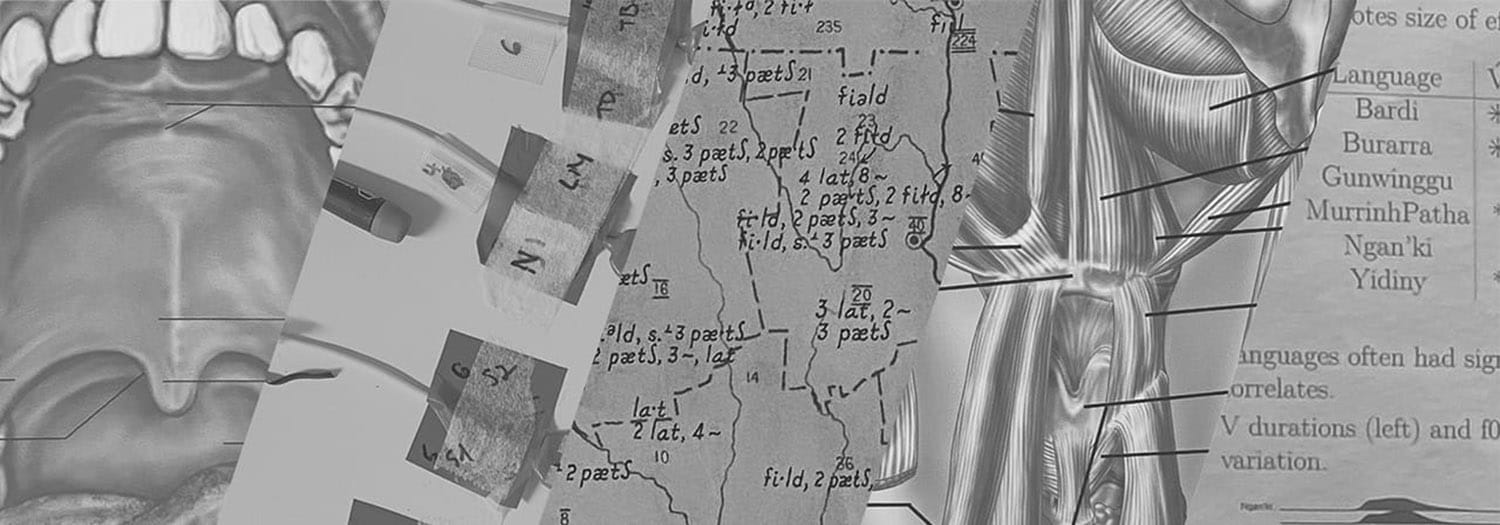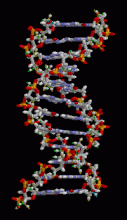Exploring the genetics of speech
PhD candidate Chris Geissler and Assistant Professor Kevin Tang of Zhejiang University joined nine other collaborators from the Yale School of Medicine, Haskins Laboratories, and Brock University to publish an article in the Proceedings of the National Academy of Sciences of the United States of America (PNAS) on the genetics of language. The article identifies a relationship between the occurrence of a certain gene and the number of consonants in a language, shedding light on the question of how genetics may influence language.
DCDC2 is a gene that influences the way humans and animals perceive sounds. Studies on animal models and human subjects have shown that the presence or absence of DCDC2 affects our ability to distinguish between different speech sounds. More specifically, the DCDC2 gene includes a sequence of nucleotides called the regulatory element associated with dyslexia 1 (READ1), which controls how the gene is transcribed into RNA. The exact contents of the READ1 portion of DCDC2 vary across different individuals, and we may think of the DCDC2 gene as having several versions, or alleles, based on the contents of READ1. In previous studies, READ1 was shown to be linked to variation in the way we speak and read. One allele of READ1 has also been shown to be associated with language impairments such as dyslexia.
Our understanding of the DCDC2 gene and the READ1 component of that gene mainly come from studies of individual animal and human subjects. The authors of the article wanted to know whether or not these individual effects may accumulate to influence language at the population level. If some alleles of READ1 help us distinguish between sounds in a more fine-grained manner than others, then perhaps populations with a greater prevalence of those alleles may speak languages with a larger number of different speech sounds. To tackle this question, associate research scientist Mellissa DeMille and Professor Jeffrey R. Gruen of the Yale School of Medicine designed a study examining 43 different populations from around the world, such as the Pima people of Arizona and Mexico, the Yakuts of eastern Russia, the Ethiopian Jews, and the Yoruba of Nigeria. For each population, the authors estimated the relative distribution of three groups of alleles of READ1. They then compared these estimated distributions with the number of sounds in languages spoken by each population. The authors found that populations where alleles belonging to the RU1-1 group are more common tend to speak languages with a larger number of consonants. No such relationship was found between allele type and number of vowels.
One possible explanation for the relationship between prevalence of RU1-1 and the number of consonants in a language, but not the number of vowels, can be found by studying exactly how DCDC2 affects the brain. The nervous system consists of a collection of special cells called neurons that communicate with one another by sending messages known as action potentials. A major role played by DCDC2 is to control the precision with which these action potentials are sent when listening to sounds; when the gene is eliminated or reduced in rodents, their brains fire action potentials more erratically. Since consonants are short in duration, distinguishing consonants from one another requires a precise measurement of the timing of each sound. Therefore, any difference in DCDC2 leading to higher or lower precision in action potentials may affect our ability to distinguish between consonants. Vowels, on the other hand, are longer in duration, so precision in timing is less important for distinguishing between vowels.
Whatever the correct explanation is for the results, it is important to remember that in the vast majority of cases, the effects of READ1 on our ability to perceive speech sounds are subtle. We know both from experiments and from experience that a newborn child could potentially grow up to speak any language regardless of genetics, as long as the child is exposed to that language while growing up. However, these tiny differences in the way each person speaks and listens can add up over time. In communities where RU1-1 alleles are less common, it may be just a little bit more likely than average that someone might decide to treat two different sounds as if they were one. This person could then inspire their peers to do the same, and the next generation of speakers could end up with one fewer consonant in their language.
The article, “Worldwide distribution of the DCDC2 READ1 regulatory element and its relationship with phoneme variation across languages,” is available on the PNAS journal website. All PNAS articles are made available to the public for free within six months of publication. Additional information about the project can be found in an article in the Yale Daily News.
Kevin participated in this project while he was a postdoc at the Yale University Department of Linguistics, prior to his appointment at Zhejiang University. Apart from Mellissa, Jeffrey, Kevin, and Chris, the other co-authors of the article are associate research scientist Chintan Mehta, Beatrice Bowen, graduate student Andrew Adams, and postdoc Dongnhu Truong of the Yale School of Medicine; research scientist Jeff Malins of the Yale School of Medicine and Haskins Laboratories; postdoc Natalie Powers of the Jackson Laboratory; and Jan Frijters of Brock University. Natalie was a graduate student at the Yale School of Medicine while working on this project.


